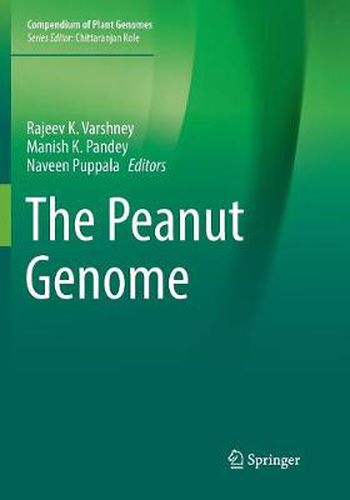Readings Newsletter
Become a Readings Member to make your shopping experience even easier.
Sign in or sign up for free!
You’re not far away from qualifying for FREE standard shipping within Australia
You’ve qualified for FREE standard shipping within Australia
The cart is loading…






This title is printed to order. This book may have been self-published. If so, we cannot guarantee the quality of the content. In the main most books will have gone through the editing process however some may not. We therefore suggest that you be aware of this before ordering this book. If in doubt check either the author or publisher’s details as we are unable to accept any returns unless they are faulty. Please contact us if you have any questions.
This book presents the current state of the art in peanut genomics, focusing particularly on the latest genomic findings, tools and strategies employed in genome sequencing, transcriptomes and analysis, availability of public and private genomic resources, and ways to maximize the use of this information in peanut breeding programs. Further, it demonstrates how advances in plant genomics can be used to improve crop breeding.
The peanut or groundnut (Arachis hypogaea L. Millsp) is a globally important grain legume and oilseed crop, cultivated in over 100 countries and consumed in the form of roasted seeds, oil and confectionary in nearly every country on Earth. The peanut contributes towards achieving food and nutritional security, in addition to financial security through income generation; as such, it is also vital to the livelihood of the poor in the developing world.
There have been significant advances in peanut research, especially in the last five years, including sequencing the genome of both diploid progenitors, and the availability of tremendous transcriptome resources, large-scale genomic variations that can be used as genetic markers, genetic populations (bi- and multiparent populations and germplasm sets), marker-trait associations and molecular breeding products. The immediate availability of the genome sequence for tetraploid cultivated peanuts is the most essential genomic resource for achieving a deeper understanding of peanut traits and their use in breeding programs.
$9.00 standard shipping within Australia
FREE standard shipping within Australia for orders over $100.00
Express & International shipping calculated at checkout
This title is printed to order. This book may have been self-published. If so, we cannot guarantee the quality of the content. In the main most books will have gone through the editing process however some may not. We therefore suggest that you be aware of this before ordering this book. If in doubt check either the author or publisher’s details as we are unable to accept any returns unless they are faulty. Please contact us if you have any questions.
This book presents the current state of the art in peanut genomics, focusing particularly on the latest genomic findings, tools and strategies employed in genome sequencing, transcriptomes and analysis, availability of public and private genomic resources, and ways to maximize the use of this information in peanut breeding programs. Further, it demonstrates how advances in plant genomics can be used to improve crop breeding.
The peanut or groundnut (Arachis hypogaea L. Millsp) is a globally important grain legume and oilseed crop, cultivated in over 100 countries and consumed in the form of roasted seeds, oil and confectionary in nearly every country on Earth. The peanut contributes towards achieving food and nutritional security, in addition to financial security through income generation; as such, it is also vital to the livelihood of the poor in the developing world.
There have been significant advances in peanut research, especially in the last five years, including sequencing the genome of both diploid progenitors, and the availability of tremendous transcriptome resources, large-scale genomic variations that can be used as genetic markers, genetic populations (bi- and multiparent populations and germplasm sets), marker-trait associations and molecular breeding products. The immediate availability of the genome sequence for tetraploid cultivated peanuts is the most essential genomic resource for achieving a deeper understanding of peanut traits and their use in breeding programs.